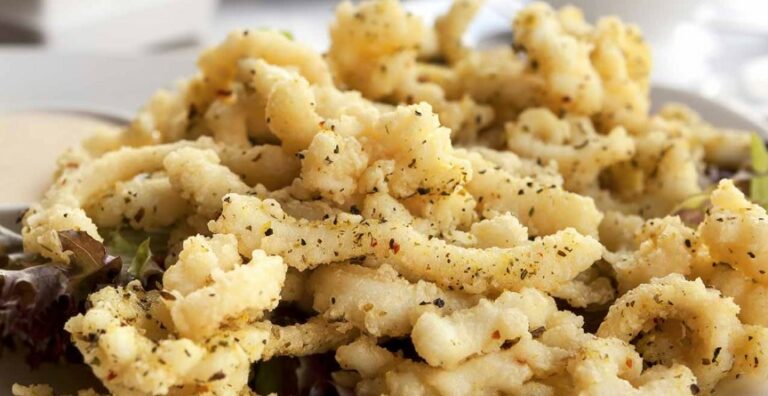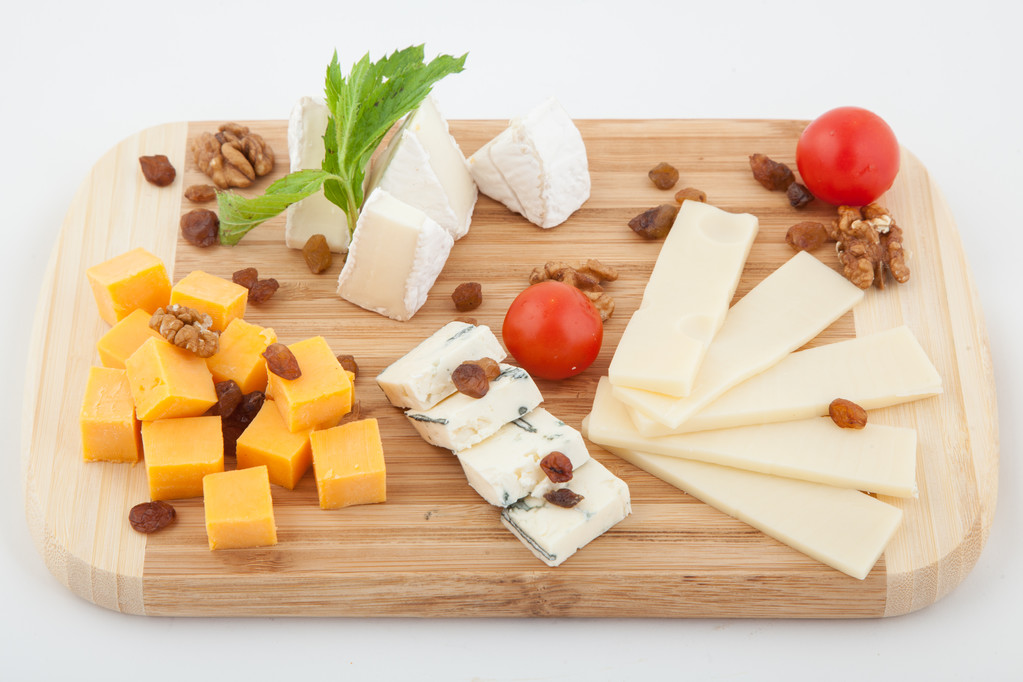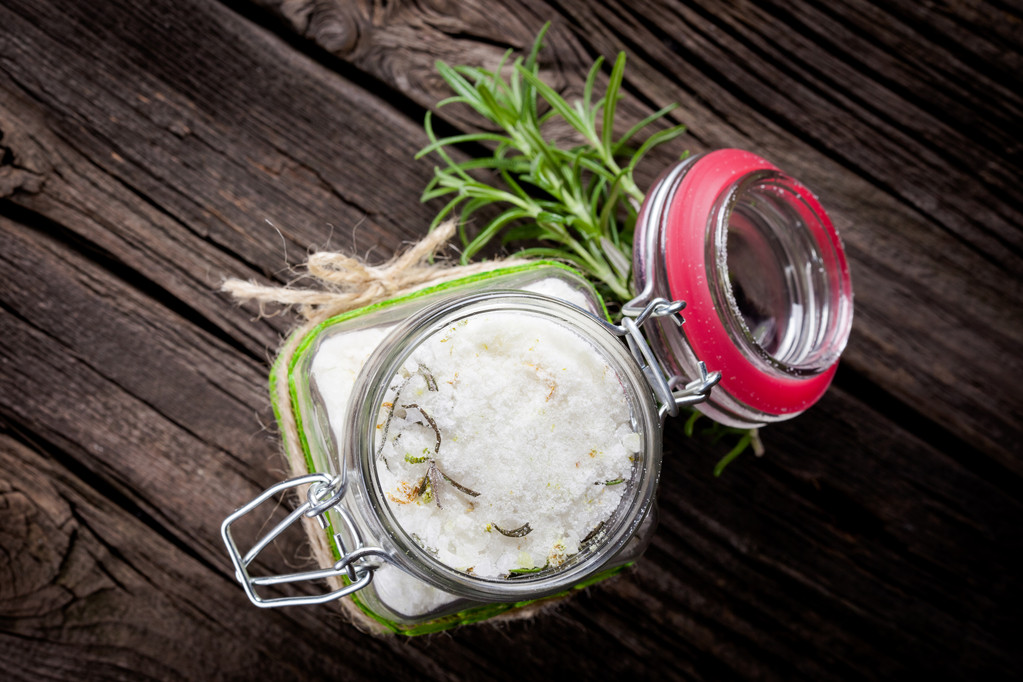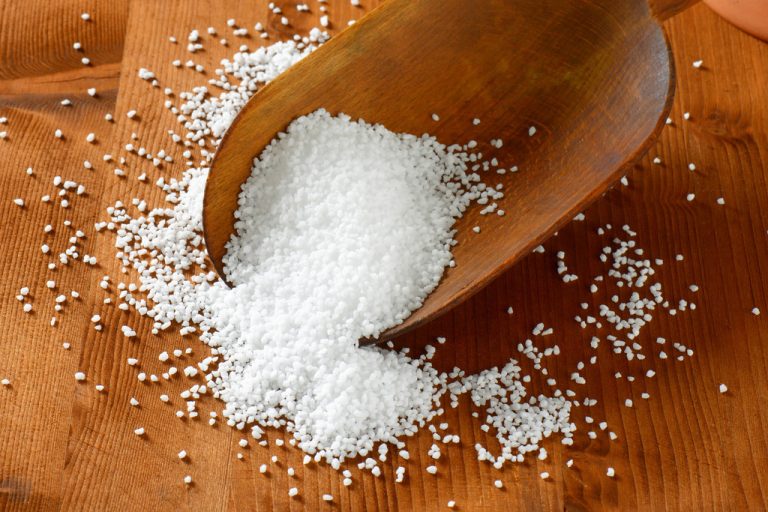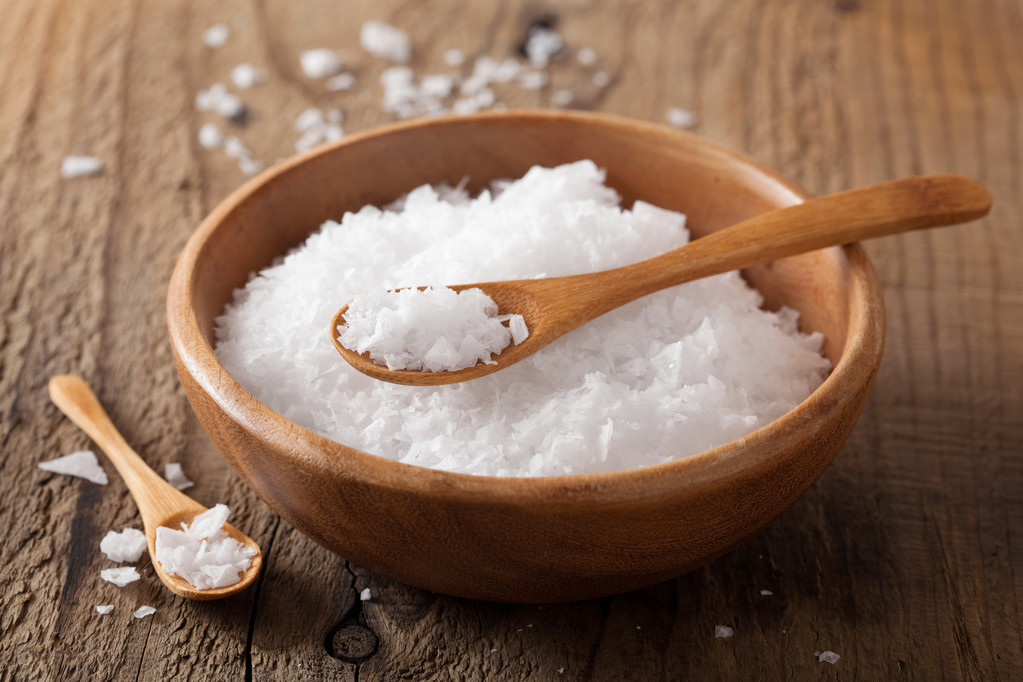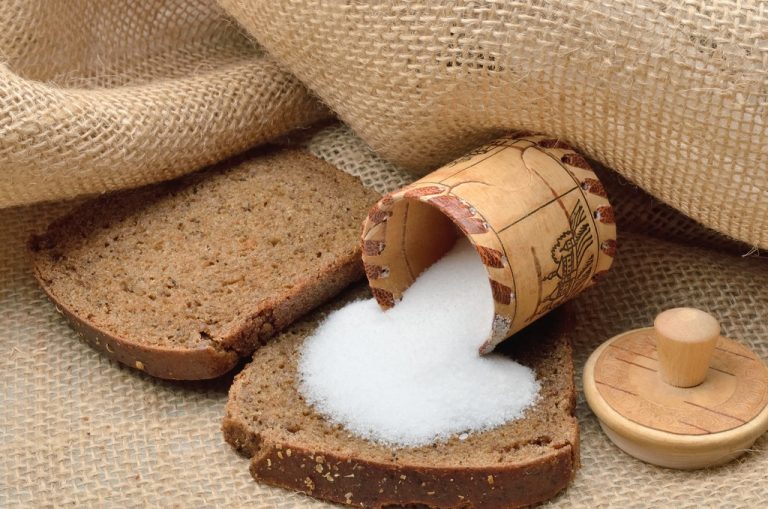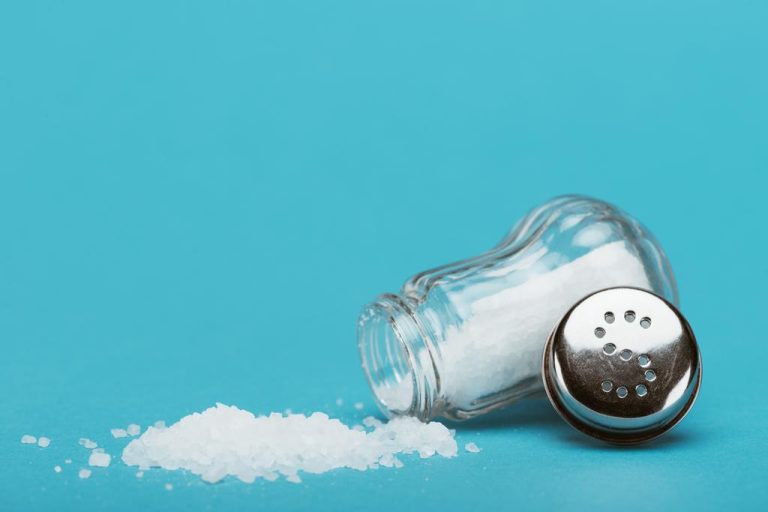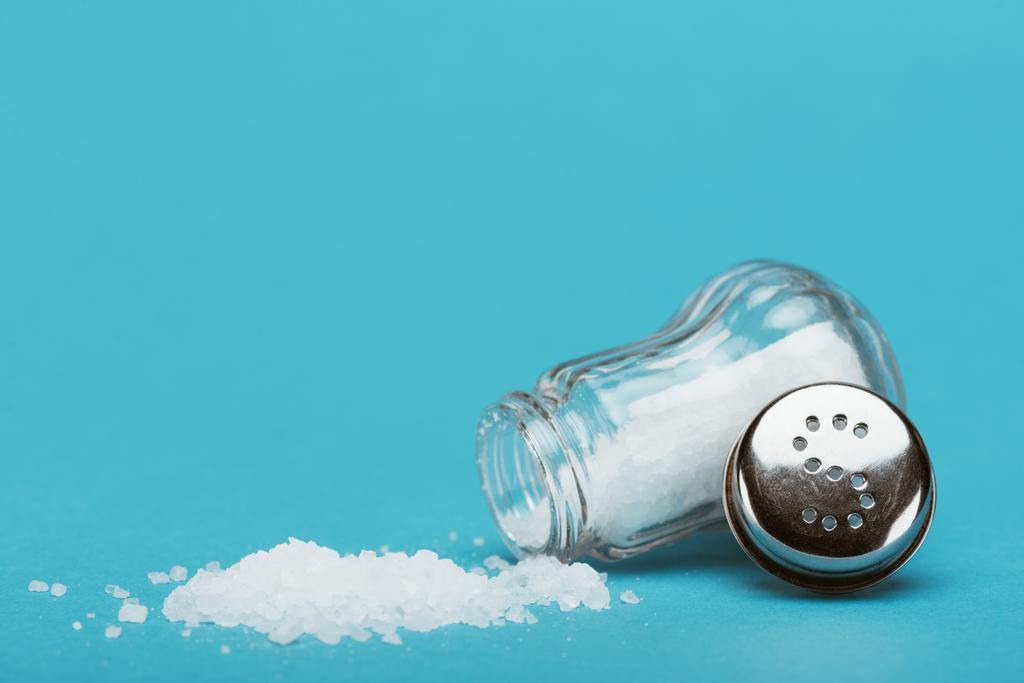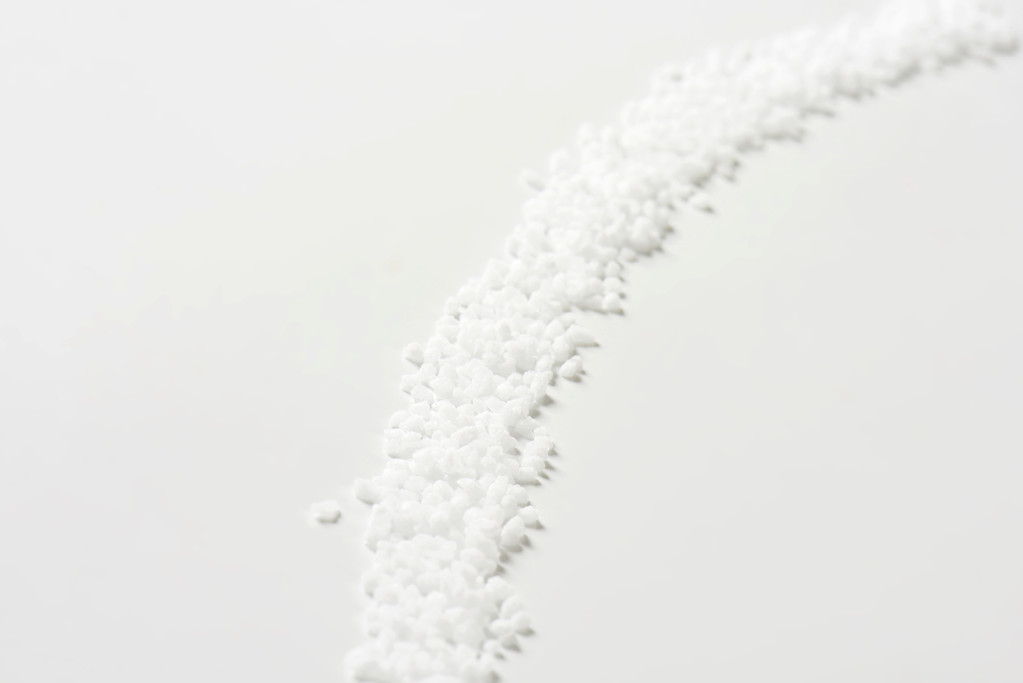Whether frozen pizza, ready-to-eat products or wheat pastries: table salt is hidden everywhere. However, high salt consumption has a negative effect on health. So how can you eat less salt? We explain which foods are suitable for this – and which ones you should stay away from.
What nutrients are in salt?
The nutrients in table salt are considered vital minerals for our body. Table salt contains the minerals sodium and chloride, but small amounts of calcium, magnesium or phosphorus can also be found in it. In addition, many salts that are commercially available are enriched with additives. The most common additions are:
Iodine is a vital trace element that the organism needs, for example, to produce thyroid hormones.
Fluoride protects teeth from tooth decay and is therefore often added to toothpaste.
Folic acid is needed by the body for cell growth and blood formation. It protects against heart attack and stroke.
Salt is the main source of sodium and chloride in the diet, which are essential for certain bodily functions. These include maintaining the fluid balance in the cells or regulating blood pressure. Sodium chloride also transmits nerve impulses, which is important for the heart, bones and muscles. Sea salt* is very popular at the moment because it has a stronger flavor than regular table salt. Himalayan salt* is also popular and of very high quality. Other types of salt* are table salt, rock salt, smoked salt, sapphire salt or pearl salt.
Health consequences of increased salt consumption
Due to its taste-giving and preserving properties, table salt is mainly added to processed foods such as convenience products, bread, meat, sausage and cheese. However, since the salt content is often so inconspicuous, many consumers are not even aware of the high salt consumption. The WHO recommends around five grams of salt a day. On average, every German eats twice as much. But too little salt can also be harmful. It should still be at least two to three grams of salt per day.
Too much table salt increases blood pressure and thus increases the risk of developing high blood pressure (hypertension), which in turn increases the occurrence of cardiovascular diseases. So if you have heart problems, you should urgently check your salt consumption. Too much table salt also increases the risk of stroke and heart attack.
According to a study, too much salt also has a negative effect on our immune system. A high-salt diet therefore weakens the ability of certain immune cells to fight bacterial pathogens. As a result, infections are more severe and heal much more slowly.
How much salt is in which foods?
According to the consumer center, 75 to 90 percent of the daily salt intake comes from processed foods and eating out. Ready meals such as frozen pizza, ready pasta dishes or pickled herring already contain the daily salt requirement. Most of the salt in Germany is absorbed through bread and rolls. They contain between 0.78 and 1.68 grams of salt per 100 grams. Bread with around 1 gram of salt per 100 grams is recommended.
But meat and sausage products, dairy products and cheese are also the main sources of high-salt nutrition. A pair of Vienna sausages, 100 grams of smoked ham or salami also already contain the daily dose of salt. A proportionate amount of salt can also be found in dairy products such as Gorgonzola, Gouda or Feta.
Most of the time, consumers find it impossible to tell how much salt is in certain foods. If available, the nutritional value table on the packaging is often very confusing, because often it is not the salt content but only the sodium content that is stated. Multiply this content by 2.54 – then you get the table salt content.
Tips for reducing salt consumption in the diet
It is best to start with the products that are eaten in larger quantities and try to buy lower-salt alternatives. In general, the consumption of processed foods should be reduced and the consumption of unprocessed foods, such as vegetables and fruit, increased. It is also worth looking for alternative types of bread with less salt. When shopping for many food groups, you should pay attention to the salt content. There are often big differences, so that a low-salt diet does not pose any major restrictions.
Alternative foods (salt in grams per 100 grams):
Wholemeal toast (1.0) instead of wheat toast (1.4)
Pretzel croissant (0.8) instead of pretzel (3.1)
Mortadella (1.7) instead of salmon ham (6.1)
Lyoner (2.0) instead of salami (5.4)
Cream cheese double cream level (1.0) instead of processed cheese (3.1)
Emmental (0.9) instead of Gouda (2.8)
Cheese pastries, puff pastry (0.5) instead of peanut chips (1.9)
Peanuts (0.03) instead of salted and roasted peanuts (1.0)
Wrap with lettuce and chicken (0.8) instead of cheeseburger (1.7)
Tortellini (0.6) instead of Maultaschen (1.5)
Spaghetti with tomato sauce (0.3) instead of cheese spaetzle (1.4)
Fresh foods such as fruit and vegetables usually contain no salt at all, so a vegan automatically lives with less salt than a consumer of animal products. You should also avoid fast food and convenience products. You can also save on unnecessary salt by making your own bread, pasta and pastries. And sausage and cheese from local farmers have been shown to contain fewer preservatives.


